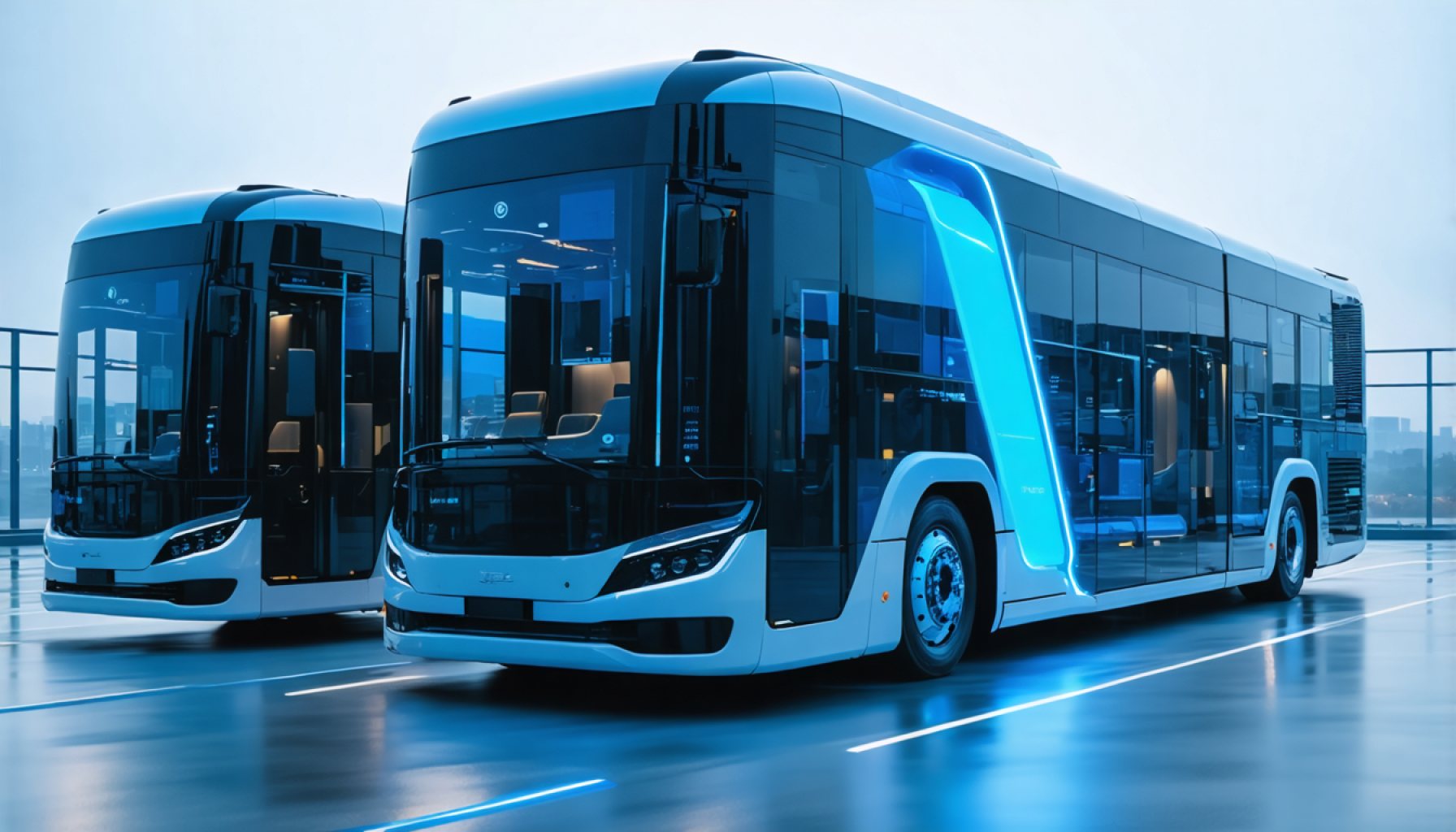- CATL’s new battery technology is set to transform commercial transport with improved efficiency, longevity, and reliability.
- The battery offers a specific energy of 175 Wh/kg and an energy density of 270 Wh/L, enhancing energy storage for electric vehicles.
- Applications include transit buses, school buses, last-mile delivery vehicles, trains, and off-road vehicles, underscoring its versatility.
- Featuring a lifespan of 1.5 million kilometers or 15 years, these batteries reduce the need for frequent replacements, benefiting fleet operators.
- Coulomb Solutions collaborates with CATL to bring these innovations to North America, adding financial predictability to business planning.
- Orders are being accepted with deliveries anticipated in September, marking a step towards a more sustainable transportation future.
A revolutionary new energy solution from Chinese powerhouse CATL is poised to transform the landscape of commercial transport, promising efficiency, longevity, and reliability like never before. Imagine buses, delivery vehicles, and even marine vessels humming with life from cutting-edge battery technology that underscores sustainability and cost-effectiveness.
The core of this innovation lies in a remarkably efficient battery with a specific energy of 175 Wh/kg and an energy density of 270 Wh/L. These metrics spell a leap forward in energy storage, laying a solid foundation for the future of electric vehicles. With CATL at the helm of production and Coulomb Solutions steering the assembly for North American markets, this collaboration signifies an exciting intersection of technology and utility.
Picture a bustling cityscape where last-mile delivery vehicles whiz by silently, powered by these robust battery systems. Transit and school buses glide along their routes, reducing emissions and fossil fuel dependency. The smooth operation of trains and off-road vehicles further cements the battery’s versatility and reach.
What sets this battery apart is its formidable lifespan. CATL’s groundbreaking Tectrans B cell, developed for electric buses, shares its DNA with this new technology, boasting an impressive lifespan capable of covering 1.5 million kilometers or 15 years of usage. The assurance of longevity without the ominous specter of expensive replacements or operational downtime is invaluable for fleet operators.
As Coulomb Solutions’ CEO eloquently highlights, these batteries are not just about cutting-edge technology but providing confidence and financial predictability to businesses. Fleet operators can now chart their costs with precision, knowing that the substantial upfront investment secures them against future expenditures.
Orders are now being accepted, and the anticipation for the September delivery is palpable across various sectors eager to harness this technological marvel. CATL’s endeavor isn’t just about meeting current needs; it’s about pioneering a sustainable path forward and challenging the status quo of commercial transport.
The embrace of this new energy solution heralds a leap toward a cleaner, more efficient future in transportation, where the costs are predictable, and operations remain fluid and uninterrupted. As electric propulsion steers us away from reliance on fossil fuels, technologies like CATL’s innovative batteries symbolize the dawn of a new era.
CATL’s Game-Changing Battery Technology: Transforming the Future of Commercial Transport
The introduction of CATL’s revolutionary battery technology is setting a new standard in commercial transport. With impressive metrics such as a specific energy of 175 Wh/kg and an energy density of 270 Wh/L, this innovation promises remarkable improvements in efficiency, longevity, and environmental impact for electric vehicles and marine vessels alike. Here’s a deeper exploration of the potential impact and facets of this innovation.
How Does This Technology Work?
Specific Energy and Energy Density
– Specific Energy: Measures how much energy can be contained in a battery per kilogram of weight. CATL’s 175 Wh/kg puts it on par with some of the best lithium-ion batteries available, allowing vehicles to travel longer distances between charges.
– Energy Density: At 270 Wh/L, CATL’s battery can deliver more energy without significantly increasing in size, allowing for compact battery designs that do not consume much space, crucial for vehicles with limited room.
Real-World Use Cases
1. Urban Transport and Last-Mile Delivery:
– Imagine last-mile delivery trucks, buses, and service vehicles operating throughout cities with zero emissions. This technology facilitates a quieter and cleaner urban environment.
2. Marine Applications:
– Electric ferries and small commercial ships could use these batteries to drastically reduce emissions and comply with increasingly stringent environmental regulations.
3. Heavy-Duty and Off-Road Vehicles:
– Construction equipment and agricultural vehicles can benefit from the long lifespan and reliability, ensuring uninterrupted operations with fewer maintenance interruptions.
Features and Specs
– Lifespan: Capable of powering vehicles for up to 1.5 million kilometers or 15 years, offering peace of mind to fleet operators regarding longevity and cost management.
– Reliability: High durability reduces the risk of downtime, which is critical for commercial operators dependent on continuous operations.
Market Forecasts & Industry Trends
The demand for energy-dense, reliable, and sustainable batteries is expected to rise as regulations tighten around emissions. The electric vehicle market, including commercial sectors, is projected to expand rapidly. According to BloombergNEF, electric vehicles could account for 58% of new car sales by 2040.
Pros & Cons Overview
Pros:
– Longevity: Reduces overall vehicle lifecycle costs significantly.
– Environmental Impact: A step forward in achieving carbon neutrality.
– Cost-Efficiency: Initial investments translate to substantial savings over time.
Cons:
– Initial Cost: High upfront cost may be a barrier to some operators.
– Infrastructure Needs: New charging solutions and infrastructure developments are necessary for widespread adoption.
Actionable Recommendations for Fleet Operators
– Calculate ROI: Evaluate long-term savings versus the upfront cost to fully understand the financial benefits.
– Infrastructure Planning: Start planning for supporting infrastructure, like charging stations, to ensure smooth integration.
– Training Programs: Prepare your workforce with training sessions on maintaining and operating electric-powered fleets.
Related Links
For more information on electric vehicle innovations, visit CATL.
In conclusion, CATL’s innovative battery technology is more than just a technical achievement; it marks a transformative step in sustainable commercial transport. Its profound impact on emissions, maintenance costs, and operational efficiency is set to redefine the industry, paving the way toward a greener future.
